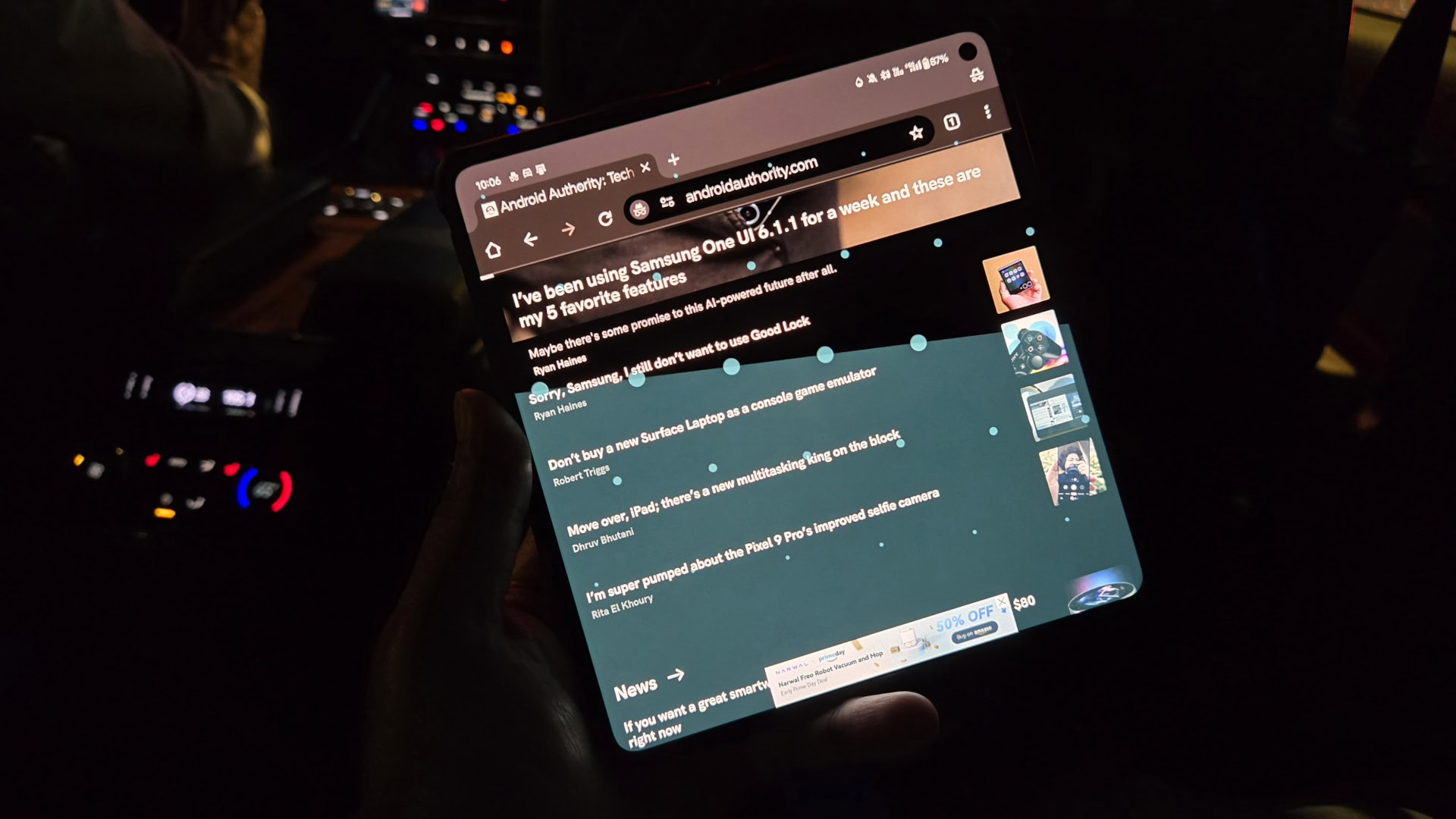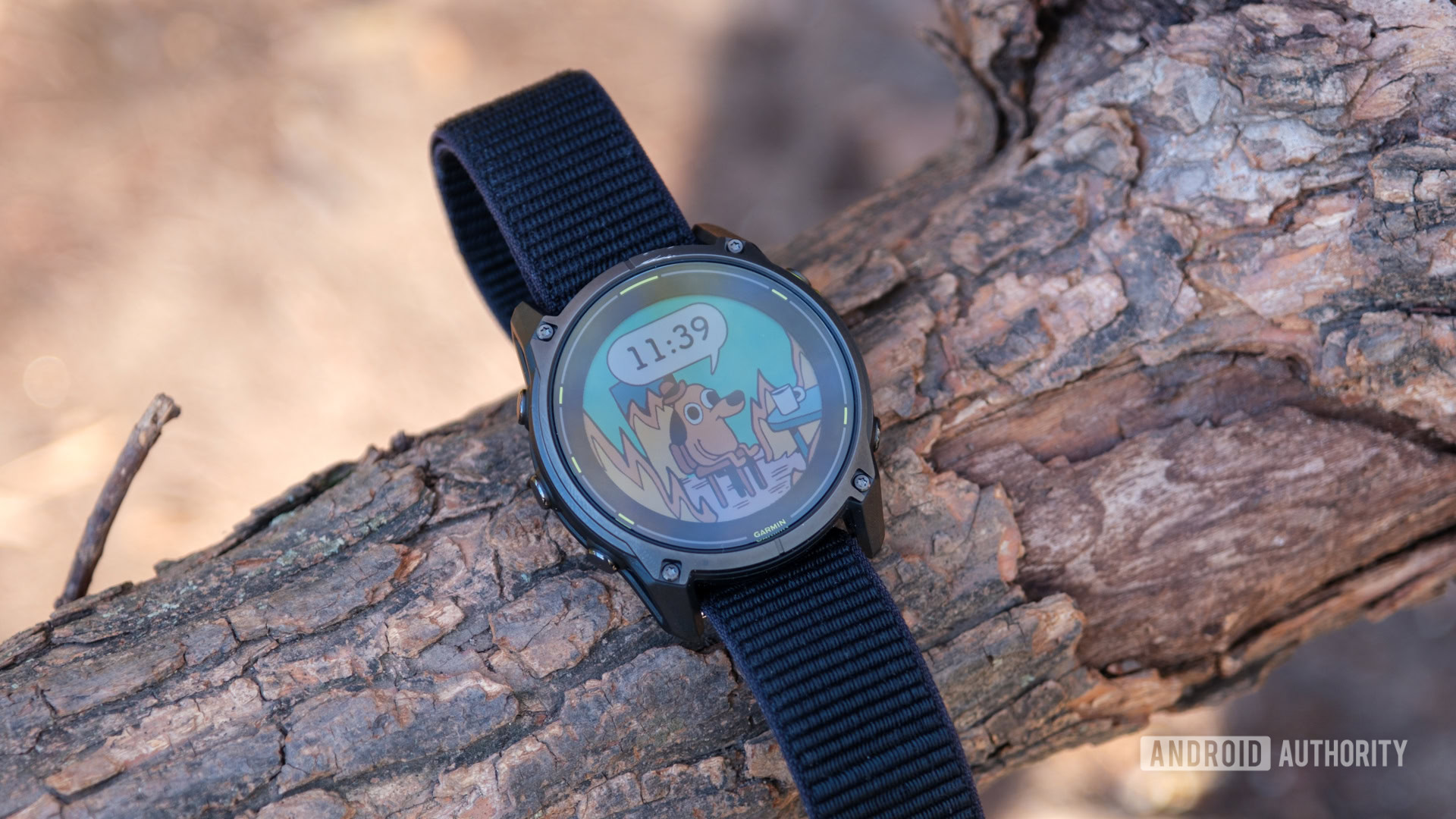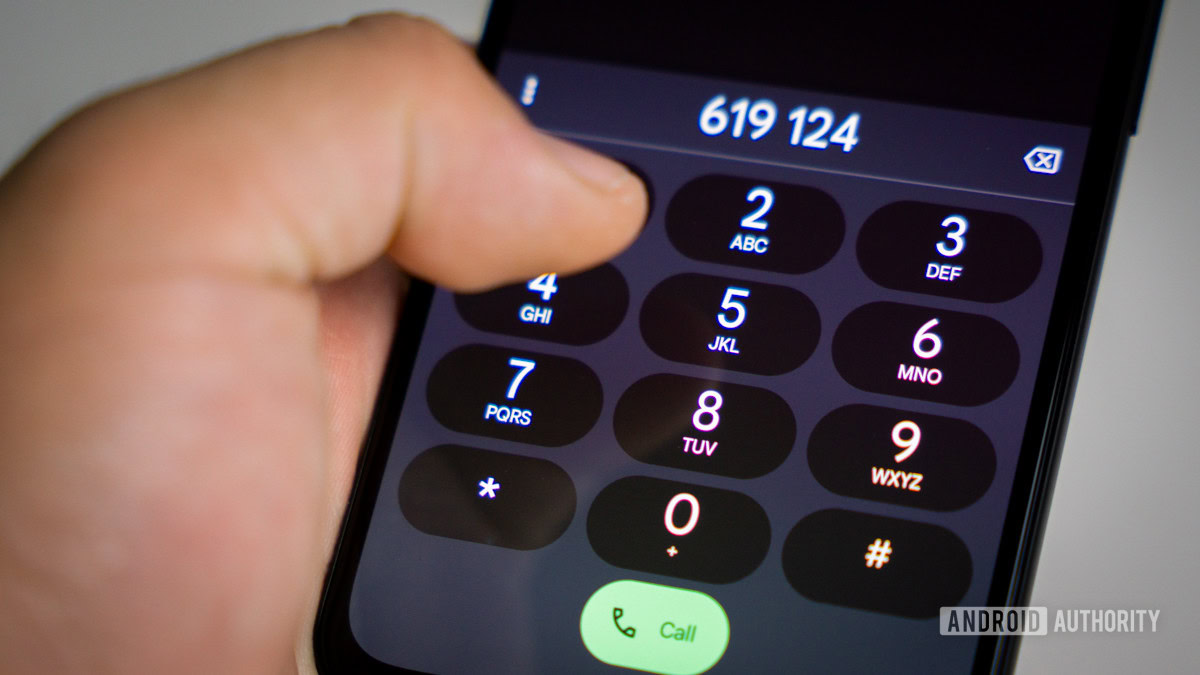
Mishaal Rahman / Android Authority
TL;DR
- KineStop is an Android app that reduces motion sickness by displaying moving dots on the screen.
- These dots track the vehicle’s movement, tricking your brain into thinking the phone is moving along with it.
- Apple introduced a similar feature in iOS 18 called Vehicle Motion Cues, but KineStop has been around for years and is available on any Android device.
Many people have trouble using their smartphones in a moving vehicle. This is because they suffer from motion sickness, a condition that causes symptoms like nausea, headaches, and dizziness. In iOS 18, Apple is introducing a feature called Vehicle Motion Cues that helps reduce motion sickness when using an iPhone or iPad in a moving vehicle. Apple has been deservedly praised by many for adding this helpful accessibility feature to iOS, but motion sickness isn’t something that only iPhone and iPad users can suffer from. Fortunately for Android users, there’s a free app you can install that offers functionality similar to Vehicle Motion Cues, and it’s actually been around for years.
Motion sickness happens because of a “sensory conflict between what a person sees and what they feel,” according to research cited by Apple. If you’re looking at your phone or tablet while sitting in a moving vehicle, you’ll experience a sensory conflict between what your inner ears feel and what your eyes see. Although your phone or tablet looks stable since it’s held tightly in your hands, your brain obviously recognizes that you’re actually moving quite quickly. It’s this disconnect that causes discomfort, which affects some people more than others.
The solution, for many people at least, is to just stop using their phone or tablet when they’re in any moving vehicle. While some might argue this is good for their digital well-being, I’m sure that most of the people affected by this issue will want to decide for themselves whether they should be able to use their devices in a moving vehicle. That’s why Apple is adding Vehicle Motion Cues as an optional accessibility feature in iOS 18 and iPadOS 18. The feature places animated dots on the edges of the screen that track changes in the vehicle’s motion; these dots basically trick your brain into thinking your phone’s screen is moving along with the vehicle, resolving the sensory conflict that causes motion sickness. It might not be perfect and won’t fully fix motion sickness for everyone, but it works for a lot of people and is a great option to have.
Petr Nálevka, the developer of KineStop: Car sickness aid, had the same idea back in 2018. You might know Petr from his work on one of the best alarm clock apps for Android: Sleep as Android. On August 16, 2018, he released KineStop onto the Google Play Store. KineStop is a free Android app that aims to “get rid of kinetosis,” which is another term for motion sickness. The app functions almost exactly like Vehicle Motion Cues in iOS 18. It places a bunch of dots on your screen and uses your phone’s motion sensors to move those dots in accordance with the vehicle’s movements.
I wouldn’t say I suffer from motion sickness, but even I experience discomfort when I use my phone on a really bumpy ride. KineStop almost completely eliminated that discomfort for me. I was shocked at how effective it was, especially considering how simple the solution seems. Here’s a short video that shows KineStop drawing dots on my phone’s screen that move with the vehicle I’m in. This video obviously can’t show you how effective it is, though, so I recommend you download KineStop from Google Play to try it out for yourself. It’s free, works on any device running Android 7.0 or later, and is still in active development, with the last update released earlier this month.
KineStop is one of those simple yet incredibly useful utility apps that many people swear by. It only just broke 100k downloads on Google Play, a lot of which came after people went looking for an Android version of iOS 18’s Vehicle Motion Cues. Little did they know that Android users have had this feature since 2018. Regardless of who did it first, I’m glad that Android users at least have an option like this, even if it comes in the form of a third-party app. Hopefully, Google considers baking something like this into Android itself now that Apple has added it to iOS.
Got a tip? Talk to us! Email our staff at [email protected]. You can stay anonymous or get credit for the info, it's your choice.







 English (US) ·
English (US) ·